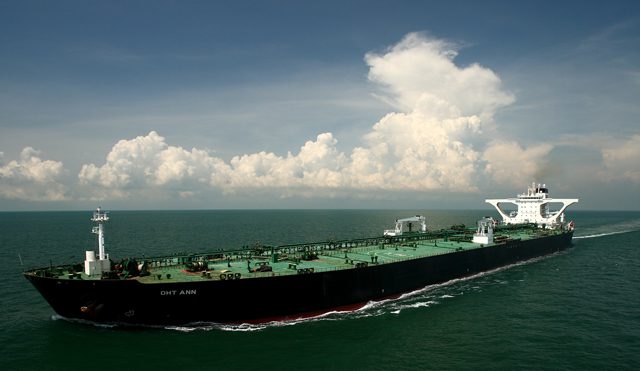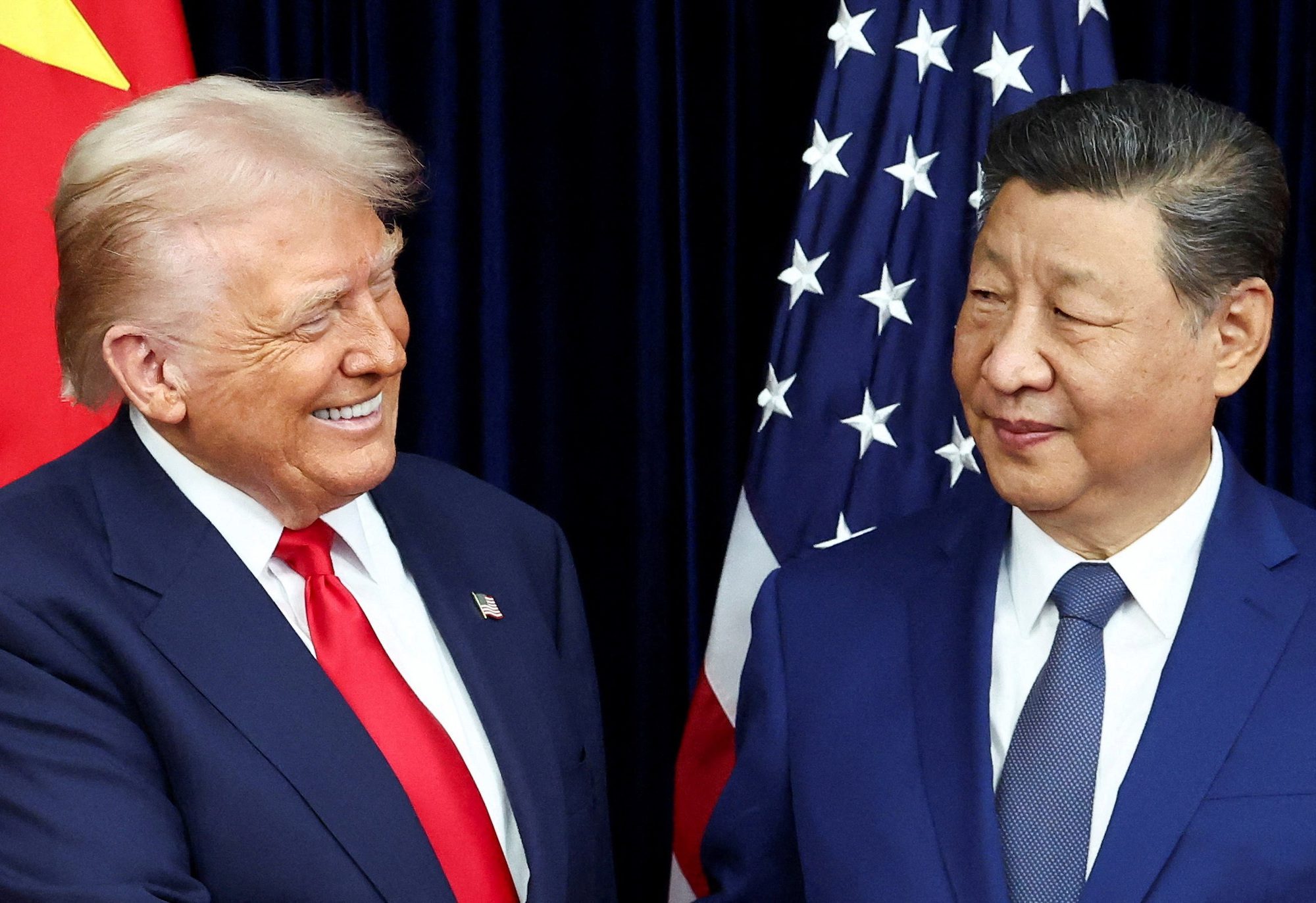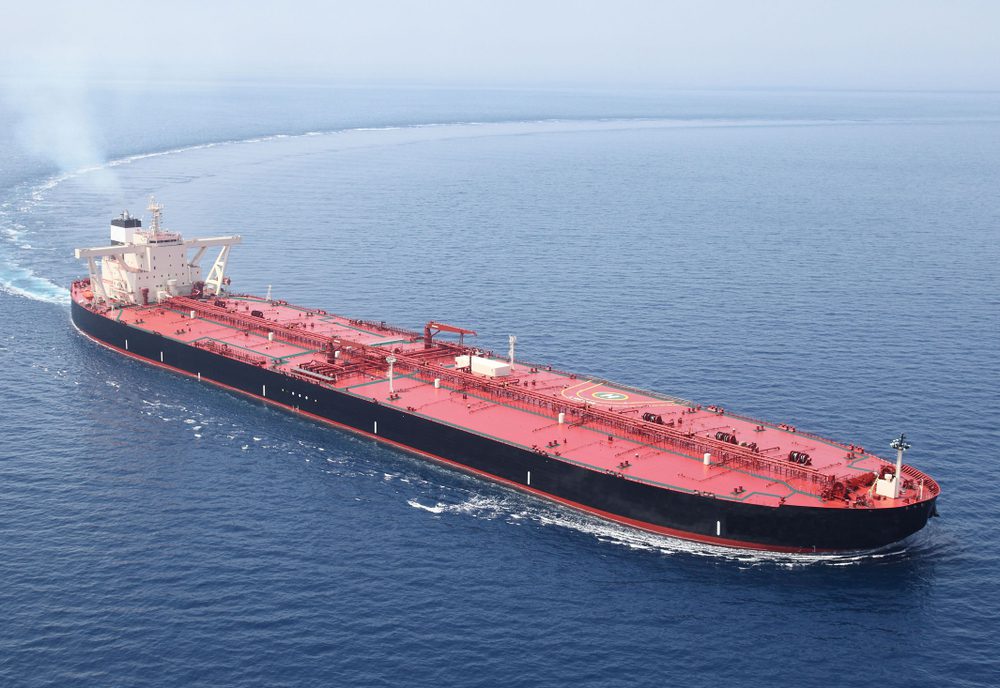DHT Ann, image (c) DHT Tankers
Nov. 27 (Bloomberg) — Record Asian oil demand is spurring the region’s refineries to charter the most supertankers in a year, driving shipping rates to the highest level since 2010.
Traders hired enough carriers in the spot market from owners including Frontline Ltd. and Mitsui O.S.K. Lines Ltd. to load 35.9 million metric tons in the four weeks ended Nov. 24, according to data compiled by Bloomberg from broker reports. The shipments, the largest this year, expanded 53 percent since the end of August, during which time a glut of shipping capacity in the Persian Gulf shrank by about the same amount.
Asian economies are growing about three times faster than the global average, spurring the International Energy Agency, an adviser to 28 nations, to predict the region’s oil demand will rise to a record this quarter. Earnings from the tankers jumped to $50,801 a day on Nov. 22, a 34-fold gain from August, according to Clarkson Plc, the biggest shipbroker.
“Owners have strong momentum and the kind of optimism you get when there’s sudden sunshine after months of rain,” said Per Mansson, a shipbroker at Platou London LLP who’s worked in the industry since the 1970s. “The market will stay quite firm until at least February,” boosted by winter demand in the Northern Hemisphere, he said.
Read: Thinning Orderbooks, Higher Production, and Increased Ton-Mile Demand – report by Teekay
Running Costs
The vessels, known as very large crude carriers, or VLCCs, earned an average of $10,907 a day this year, the lowest in at least 16 years, Clarkson data show. They need $10,350 to cover running costs including crew, repairs and insurance, according to accountant Moore Stephens LLP, which tracks industry expenses. Frontline, the largest tanker company, says its VLCCs need $25,000 to break even once financing expenses are included.
The Hamilton, Bermuda-based company, led by billionaire John Fredriksen, split in two at the start of last year. A new company, Frontline 2012 Ltd., also has the vessels as well as ships hauling everything from coal to iron ore to liquefied petroleum gas.
“We are seeing more exports volume from the Persian Gulf and Saudi Arabia, but also from the Atlantic,” said Jens Martin Jensen, the London-based chief executive officer of Frontline’s management unit. “There’s some tightness in the market that’s squeezing up the rates.”
Mitsui Surge
Shares of Mitsui O.S.K., the largest publicly traded owner of VLCCs, rose 69 percent to 428 yen ($4.22) in Tokyo this year. They will advance another 5.5 percent to 451.38 yen in the next 12 months, according to the average of 13 analyst estimates compiled by Bloomberg. The company also owns dry-bulk ships and vessels transporting containers.
“We understand the trend will continue,” Mitsui O.S.K.’s tanker unit said in a statement. “We expect VLCC demand to increase to Asia.”
While U.S. imports are declining as production of oil and gas from shale-rock formations drives the nation closer to energy independence, that’s being replaced by shipments to China and India, Mitsui O.S.K. said.
Asian demand for oil will increase to an all-time high of 29.25 million barrels a day this quarter, according to the IEA. India’s consumption will rise by 350,000 barrels a day, the largest quarter-on-quarter gain on record. Japan will grow by the same amount and China by 330,000 barrels a day, both the biggest expansions since the end of 2012.
The region’s economic growth could slow, weakening demand for VLCCs because the continent’s refineries account for more than 70 percent of cargoes for the ships, according to Clarkson.
A Chinese manufacturing gauge declined for the first time in four months, reflecting headwinds to growth in the world’s second-largest economy. The preliminary 50.4 reading for the November Purchasing Managers’ Index released Nov. 21 by HSBC Holdings Plc and Markit Economics was below the final 50.9 in October. Levels above 50 indicate expansion.
Technical Surplus
As well as Asia’s rising demand, the Northern Hemisphere winter is increasing delays, meaning ships take longer to return to load cargoes, Mansson of Platou said. Warmer weather next year will decrease congestion and ships may also sail faster, adding available capacity, he said.
About 37.83 million barrels of oil a day will be shipped on VLCCs and smaller tankers this year, about 1 percent less than five years ago, according to Clarkson. The VLCC fleet’s combined capacity expanded 26 percent in the past five years, the shipbroker’s data show.
Available shipping capacity in the Persian Gulf exceeded demand by about 19 percent on average since the start of January, the most in at least four years, according to weekly surveys by Bloomberg News. The glut now comes to 13 percent.
Next Year
The worst of the excess is now starting to clear because the rate of vessel construction is slowing. The order book for new VLCCs equates to 6.4 percent of the fleet, compared with as much as 47 percent in August 2008, according to data from IHS Maritime, a Coulsdon, England-based research company.
Daily rates for the ships will advance 27 percent to $22,000 next year, according to the average of 22 analyst estimates compiled by Bloomberg News.
The increase mirrors improving prospects for other vessels transporting commodities. Earnings for all but one of 11 ship types, ranging from vessels hauling gasoline to iron-ore carriers, will climb next year, according to the analysts’ estimates. The only ship class where earnings will decline is liquefiednatural gas vessels, the estimates show.
ClarkSea Rally
The ClarkSea Index, a gauge of rates across the shipping industry, averaged $9,757 a day this year, according to Clarkson. While that’s the second-lowest annual average on record, it’s still 1.8 percent more than in 2012.
Mitsui O.S.K., based in Tokyo, will report a 48.1 billion- yen net profit for the year ending March 31, from a 178.8 billion-yen loss in the preceding period, according to the mean of 15 analyst estimates compiled by Bloomberg. The company’s VLCCs represent about 25 percent of its entire fleet’s capacity. Frontline Ltd.’s loss will narrow to $94.7 million next year from $188.6 million in 2013, the average of 11 forecasts showed.
“The market should remain relatively strong in the short term,” said Jonas Kraft, a shipping analyst at Pareto Securities AS in Oslo. “This rally shows that perhaps the market wasn’t as oversupplied as many people thought.”
– Alaric Nightingale, Copyright 2013 Bloomberg.

 Join The Club
Join The Club











